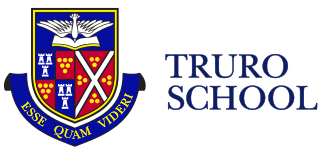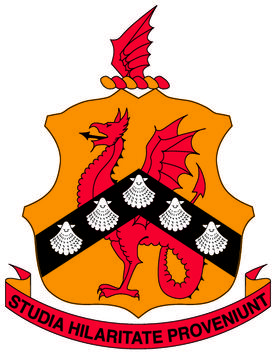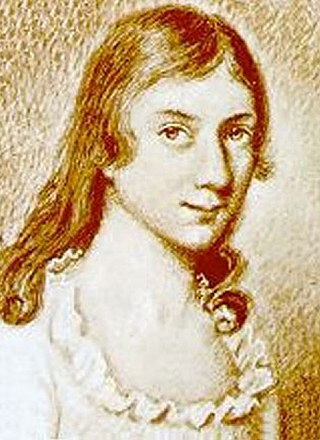
Henry Hartley Fowler, 1st Viscount Wolverhampton, was a British solicitor and Liberal politician who sat in the House of Commons from 1880 until 1908 when he was raised to the peerage. A member of the Wesleyan Methodist Church, he was the first solicitor and the first Methodist to enter the Cabinet or to be raised to the peerage.

Millfield is a public school located in Street, Somerset, England. It was founded in 1935.

Truro School is a coeducational private boarding and day school located in the city of Truro, Cornwall, England. It is the largest coeducational independent school in Cornwall with over 1050 pupils from pre-prep to sixth form. It is a member school of the Headmasters' and Headmistresses' Conference.

Rawdon is a village and civil parish in the metropolitan borough of the City of Leeds, West Yorkshire, England. It sits on the River Aire and on the A65 south of Yeadon.

Westminster College, originally the Westminster Training College, was a teacher training college and college of higher education in England. The college was founded in London in 1851 as a training institute for teachers for Wesleyan Methodist schools, but moved to Oxford in 1959. Before the move, it was part of the London Institute for Education. From 1959 to 1981, its qualifications were awarded by Oxford University. From 1981 to 1992, its qualifications were awarded by the CNAA. After 1992, its courses were validated by Oxford University again. In 2000, financial pressures caused the college to close. The Methodist Church subsequently leased the college's site at Harcourt Hill to Oxford Brookes University and it became the home of that university's Westminster Institute of Education.

Rydal Penrhos School is a private day school in Colwyn Bay, North Wales. It is the only Methodist school in the independent sector in Wales. It is located on multiple sites around the town with a site in the neighbouring village of Rhos-on-Sea where it keeps its watersports equipment for easy access to the beach.

Kingswood School is a private day and boarding school in Bath, Somerset, England. The school is coeducational and educates over 1,000 children aged 9 months to 18 years. It was founded by John Wesley, the founder of Methodism, in 1748, and is the world's oldest Methodist educational institution. The school was established to provide an education for the sons of colliers and Methodist ministers. It owns the Kingswood Preparatory School, the Upper and Middle Playing Fields and a number of other buildings.

Edgehill College was a co-educational independent school located in Bideford, Devon. Founded in 1884 by the Bible Christian movement, Edgehill was one of a number of independent schools owned by the Methodist Church of Great Britain and was sister-school to nearby Shebbear College. It was traditionally the principal girls' independent school in the area, becoming co-educational in 1992. The Preparatory School was always co-educational, with boys boarding at Shawleigh beginning in 1969.

Wycliffe College is a public school in Stonehouse, Gloucestershire, England, founded in 1882 by G. W. Sibly. It comprises a Nursery School for ages 2–4, a Preparatory School for ages 4–13, and a Senior School for ages 13–18. In total, there are approximately 800 pupils enrolled at the school. The college is set in 60 acres of land. In 2018, The Duchess of Gloucester officially opened a new £6 million boarding house named Ward's-Ivy Grove. The college attracts students from many areas of the world.

Apperley Bridge station is situated in Bradford on the line between Leeds and Shipley, West Yorkshire, England. It serves the district of Apperley Bridge in the north-east of the city.

Kingswood College is an independent, co-educational Methodist school in Makhanda,. Founded in 1894 by William C Muirhead, Clifford Witheridge Dold, William Burnett Stocks and Richard Restall Stocks, Kingswood caters for boys and girls from Grade 000 to Grade 13 from all over the world.

Apperley Bridge is a village in the metropolitan borough of the City of Bradford, in West Yorkshire, England in the Idle and Thackley Ward. Apperley Bridge is north-east of Bradford on the boundary with the City of Leeds bounded in the east by Carr Beck and to the south by Greengates. The village straddles the Leeds and Liverpool Canal and the River Aire. It takes its name from the old bridge over the river on Apperley Lane.

Stanstead College is an English-language independent boarding school in Stanstead, Quebec, Canada, for boys and girls in Grades 7 through 12. The school is located on a 600-acre (2.4 km2) campus in Quebec's Eastern Townships – just north of the Canada–United States border – and enrolls approximately 265 students.

Rev. John Farrar (1802–1884) was a Methodist minister. He was Secretary of the annual British Methodist Conference on fourteen occasions, and was twice its elected President. Farrar was tutor and governor of several Wesleyan colleges. These included the early Wesleyan training college at Abney House, near London; and British Methodism's first purpose-built college at Richmond, now Richmond University.
The Wesleyan Methodist Church was the majority Methodist movement in England following its split from the Church of England after the death of John Wesley and the appearance of parallel Methodist movements.
The Reverend Samuel Evans Rowe was a minister who reached high rank in the Methodist church before a distinguished period as a missionary in South Africa, holding senior posts in the church, and founding an educational institution for girls.

Maria Branwell is best known as being the mother of British writers Emily Brontë, Anne Brontë, Charlotte Brontë and of their brother Branwell Brontë, who was a poet and painter. Maria married Patrick Brontë on 29 December 1812.
Kent College is an independent day and boarding school from 3-18. Forest Explorers Nursery is for girls and boys from rising 3 years, boys can join Reception Class and Year 1, and from September 2023 Year 2 as the Prep School becomes a co-ed school. The Senior School and Sixth Form are girls only from 11-18.
The Methodist Church of Sri Lanka is a Protestant Christian denomination in Sri Lanka. Its headquarters is in Colombo and was established on 29 June 1814. It is a member of the World Council of Churches, the Christian Conference of Asia, the National Christian Council of Sri Lanka and the World Methodist Council.
Jonathan Crowther (1794–1856) was an English Wesleyan Methodist minister, who for a period supervised Wesleyan missionaries in the Madras Presidency of the British Raj.
























